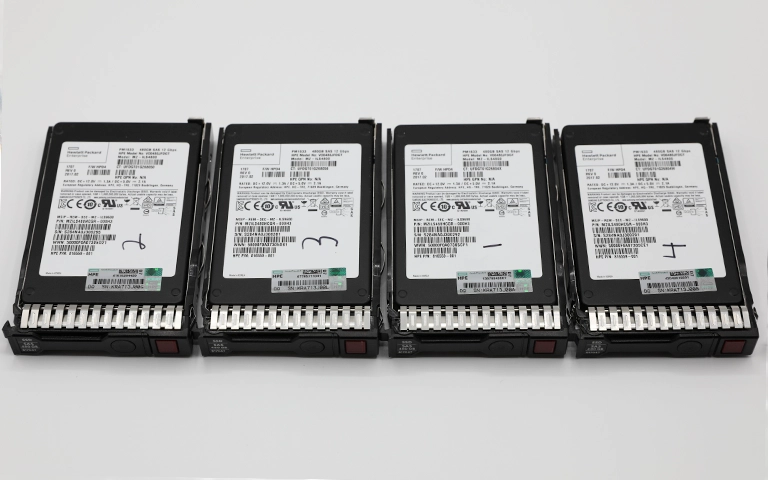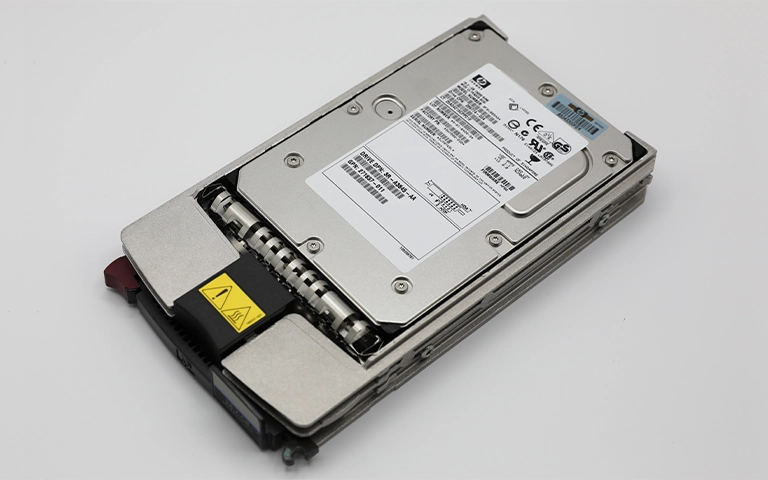RAID technology is designed to protect data and improve performance by distributing information across multiple drives.
However, not all RAID systems operate in the same way. The two main types, software RAID and hardware RAID, differ in how they manage redundancy, speed, and recovery.
Choosing between them depends on the needs of your system. While software RAID relies on the computer’s operating system to control the array, hardware RAID uses a dedicated controller card or integrated chip to manage drive communication. Each option has its strengths and limitations in terms of speed, cost, and fault tolerance.
This guide compares software RAID vs hardware RAID, helping you understand how they work, their advantages and drawbacks, and how recovery differs when one fails.

What Is Software RAID?
Software RAID is managed directly by the operating system without the need for dedicated hardware. It uses system resources such as the CPU and memory to perform RAID operations, which makes it more affordable and flexible for smaller setups or personal use.
This approach is commonly available in Windows, Linux, and macOS through built-in tools.
For example, Linux offers mdadm for software RAID management, while Windows supports RAID through its Disk Management utility. These systems can create RAID levels such as RAID 0, RAID 1, or RAID 5, depending on user needs.
While software RAID offers good performance for basic configurations, it has limitations. Since it relies on the system’s processor, performance may drop under heavy workloads.
Recovery from software RAID failures typically involves rebuilding the array using software utilities or cloning drives before reconstruction.
Software RAID is best suited for cost-conscious users or environments that do not require enterprise-grade performance or redundancy.
What Is Hardware RAID?
Hardware RAID uses a dedicated RAID controller card or an integrated chip on the motherboard to manage all RAID operations independently from the system’s CPU.
This dedicated hardware handles parity calculations, data striping, and redundancy, which results in faster performance and reduced system load.
Many enterprise servers and data centers rely on hardware RAID because it provides advanced management features such as battery-backed cache, hot-swap drive support, and real-time monitoring. These features enhance both speed and data protection, especially in complex arrays like RAID 5, RAID 6, and RAID 10.
However, hardware RAID setups are more expensive and require compatible controllers. When a controller fails, recovery can be challenging because the configuration data is often stored on the card itself.
In such cases, replacing the controller with an identical model or using professional recovery services is necessary to regain access to the data.
For more details about controller issues and their impact on data accessibility, see RAID Controller Failure Recovery.

Key Differences Between Software and Hardware RAID
Understanding the main differences between software and hardware RAID helps determine which setup aligns best with your performance, budget, and recovery goals.
Below are the key distinctions:
Performance: Hardware RAID provides faster read and write speeds since it uses a dedicated processor. Software RAID depends on the system CPU, which can slow down performance under heavy workloads.
Cost: Software RAID is budget-friendly because it requires no additional hardware. Hardware RAID involves higher upfront costs due to controller cards and specialized components.
Configuration: Software RAID is easy to set up using built-in operating system tools. Hardware RAID requires controller management utilities, often accessed during system boot.
Recovery process: Recovering from a software RAID failure usually involves software-based reconstruction, while hardware RAID recovery may require replacing the controller or professional assistance.
Reliability: Hardware RAID offers better fault tolerance and supports advanced RAID levels with caching and monitoring features. Software RAID provides redundancy but lacks hardware-based safeguards.
Scalability: Hardware RAID systems are designed for large-scale environments with multiple drives. Software RAID is typically used in smaller or non-critical setups.
Each option has its purpose. Software RAID is best for affordability and simplicity, while hardware RAID delivers stronger performance and recovery reliability for enterprise systems.

Software RAID vs Hardware RAID Comparison Table
The table below provides a clear comparison of software RAID and hardware RAID based on key operational and recovery factors.
This comparison shows how hardware RAID excels in speed, fault tolerance, and scalability, while software RAID provides flexibility at a lower cost.
For insight into how RAID configurations influence reliability, explore RAID Failure Rate.
Recovery Considerations for Both RAID Types
When a RAID array fails, the recovery approach depends on whether it is software or hardware based. Understanding these differences helps avoid irreversible data loss.
Software RAID recovery
In software-managed arrays, recovery focuses on logical reconstruction through the operating system or third-party tools. Each disk can usually be accessed individually, allowing professionals to rebuild the array by analyzing metadata and parity data. The process is generally simpler but still requires technical expertise to avoid overwriting important sectors.
Hardware RAID recovery
Recovery is often more complex because array configuration details, such as stripe size and drive order, are stored on the controller card. If the controller fails, recovery may require finding an identical replacement or performing a low-level analysis of drive images. Without professional support, mismatched configurations can lead to permanent data loss.
In both cases, continued operation after a failure can make recovery more difficult.
At RAID Recovery Services, our engineers specialize in restoring both software and hardware RAID systems affected by controller failure, corruption, or drive loss.
For troubleshooting help before recovery begins, review Troubleshoot RAID Failure.

Fast turnaround times for business-critical data
Conclusion and Expert Advice
Both software and hardware RAID provide valuable ways to improve data reliability and performance, but they serve different needs.
Software RAID is cost-effective and flexible, making it ideal for smaller systems or personal use. Hardware RAID offers superior speed, redundancy, and scalability, making it the better option for enterprise environments.
However, regardless of the type, no RAID configuration guarantees complete data safety. Hardware failure, corruption, or rebuild errors can still cause unexpected data loss.
When a RAID array becomes inaccessible, attempting manual repairs can increase the damage. The safest step is to contact professionals who understand both RAID structures and recovery processes.
At RAID Recovery Services, our engineers specialize in recovering data from all RAID levels and controller types, ensuring safe reconstruction of critical files.
To understand how RAID redundancy differs from true data protection, read RAID vs Backup.
Trust the experts with proven results
Frequently Asked Questions
What is the main difference between software RAID and hardware RAID?
Software RAID relies on the computer’s operating system to manage the array, while hardware RAID uses a dedicated controller card or chip. Hardware RAID generally offers better performance and fault tolerance.
Which is faster, software RAID or hardware RAID?
Hardware RAID is faster because it uses its own processor and cache to handle data operations. Software RAID depends on the system CPU, which can slow performance during heavy workloads.
Is software RAID reliable for business use?
Yes, software RAID can be reliable for small businesses or non-critical systems. However, hardware RAID provides higher stability and redundancy for enterprise-level storage.
Can data be recovered from a failed hardware RAID?
Yes. Professionals at RAID Recovery Services can rebuild damaged or corrupted hardware RAID arrays, even when the original controller is unavailable or non-functional.
How can I decide which RAID type is best for me?
If cost and simplicity are priorities, software RAID may be sufficient. For environments requiring high performance, advanced caching, and better recovery options, hardware RAID is the stronger choice.